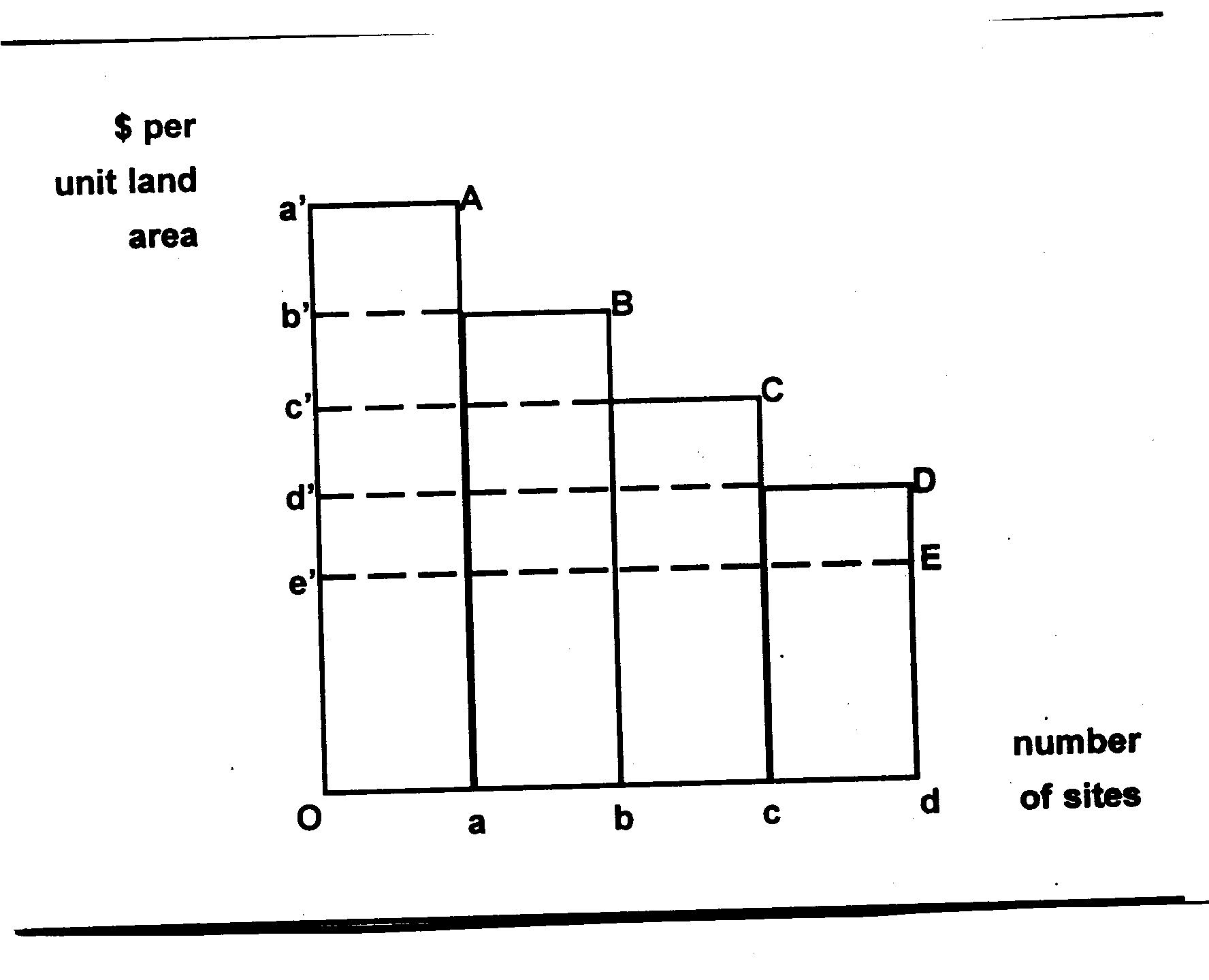The General Level of Wages
John Tippet
[Reprinted from Progress, July/August 1998]
Editor's note:
This examination of how
the general level of earnings in the community is determined is, at
times, challenging. It would, however, well repay the time taken to
understand it.
Background theory
In a free-market (capitalist) economy, the general level of earnings
is set by employment opportunities at the margin.
A man will only work for any employer on terms that are at least as
good as the man's best alternative employment, and at the margin this
alternative is to work for himself. If the necessary site (be it
office, factory, farm) is available free of charge, then the man's "earnings"
will be the net value of production from that site. If all sites are
privately owned, as is invariably the case in a free-market economy,
any would-be occupant has either to come to terms with the owner and
meet an agreed rental payment, or purchase the site outright. For
most, the latter alternative is financially impossible, and so the
former, that is rental from the landlord, is the viable alternative.
Since land (a "site") is the first necessary condition of
any economic activity, where all sites are privately owned then rental
asked by landlords will be at or near the maximum the market can bear.
For any one site this will be that amount that leaves the tenant (our
man seeking alternative employment) just enough to meet his costs of
production and some minimum acceptable return for his efforts. If this
"return" be analysed as made up of two components, "earnings"
(or wages) and profit, then both these components will be at a
minimum, that minimum below which a man would not accept. The rental
asked by landlords where all land is fully enclosed will rise to
ensure that wages (and profits) are at a minimum. Earnings (or
profits) above this minimum would be a short-run phenomenon only.
It is this minimum level of earnings at the margin that sets the
general level of earnings for the whole economy. The actual "minimum"
determined will be the outcome of two bargaining factions:
- the landlords (in setting the level of rent); and
- employees (via their union).

This establishment of a minimum level of earnings can be shown
diagrammatically as follows, where it is assumed that initially the
total stock of land of the economy is freely available for occupancy
and that occupancy, and hence ownership, is a function of growth in
population.
When population is small and a correspondingly small proportion of
the economy's available sites are occupied, the margin of "cultivation"
will have reached only point a,
and site productivity will be relatively high at Oa',
(assuming that the best sites are occupied first). The full production
Oa' of the site will be
appropriated in transfer earnings, as "labour" (here defined
as factors of production other than land) has ample opportunity if it
is not paid Oa' to leave its
employer and take up a site for itself, from which it could produce
(and retain) Oa'. However, with
growth in population and extension of the margin of "cultivation"
to b, with less advantageous
sites being occupied production per unit land area falls to b', and
transfer earnings also fall from Oa'
to Ob'. The difference a'b'
now accrues to intra-marginal site holders as economic rent, and this
rent capitalized gives all sites in the band Oa
a price (a market value). The horizontal line b'B
is the "rent line".
With further population growth and corresponding extension in the
margin of "cultivation", and this extension presumably being
upon sites of lower productive potential, the level of production at
the margin falls, transfer earnings fall (these earnings being total
production at the marginal site), and economic rent on intra-marginal
sites rises. Eventually the last available unoccupied site will be
claimed, transfer earnings (for all sites) will be Od',
d'D will be the rent line, and
the price of sites Oa will have
progressively risen from zero to a'd'
capitalised. Sites cd will earn
zero economic rent, and accordingly will have a market value of zero.
It has been assumed that the total land area, the total availability
of "sites", of the economy is represented by the horizontal
distance Od.
With occupancy (and assumed "enclosure", i.e. private
ownership) of the last available site, comes the proposition that
labour has no source of employment but that offered by existing site
occupiers. The general level of earnings for the whole community will
be determined by earnings on the marginal site, and so will be a
maximum of Od'. Now since
employees have no alternative they must accept that the landlord on
the marginal site is likely to bid down earnings to some level below
Od', such as Oe.
Just how far below Od' will
depend upon the bargaining strength of labour. (If the level of
earnings were to be bid up by labour above Od',
all sites in the interval cd, that is, all marginal sites, would be
abandoned).
The proposition in terms of the outline
(a) Assuming constant technology and hence constant productivity, the
bidding down of the general level of earnings to
Oe (with eE
being the "earnings line") has two effects:
- It (obviously) lowers the general level of earnings.
- Marginal sites assume some positive market value (equal to ed'
capitalised) where previously this was zero.
There is thus postulated a relationship between the general level of
earnings in a free market economy and the price of land. As ed'
(equals DE) grows, the price of
land will increase and the general level of earnings will decrease.
(If technology is taken as a variable and productivity of the marginal
site allowed to increase, earnings as a proportion of production will
decrease).
(b) Labour theory has it that the level of employment will be up to
the point where:
w = VMP
where: w represents the wage rate
VMP represents value of the marginal product
The above hypothesis (i.e. the postulated relationship between
earnings and the price of land) is an attempt to explain w, in terms
of the general level of earnings in the economy. For example, if the "general
level of earnings" today is $350 per week, why is it not $700, or
$200? Is there some fundamental principle that determines it?
Suggested areas of research (for interested Georgists)
(i) In terms of the above diagram
ed' (equals DE)
capitalised would be increase in the price of land not accounted for
by gains in total productive ability of the land.
(ii) The "general level of earnings" could be viewed from
two aspects: "average weekly earnings" over time, and
earnings as a proportion of GDP.
|











